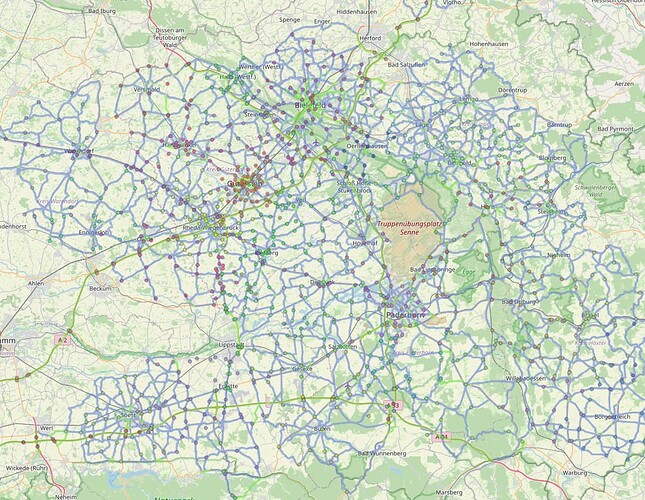I am running QA for Routing but on a very low scale - Parts of Germany. Basically i am running OSRM every couple of hours and process routes between a given (manual) set of nodes. I then compare differences over time - So when travel time in-/decreases i get mails. So i detect broken roads within a couple of hours.
I do that by “city” level. Setting nodes on the urban entry on the neighbouring city. I calculate routes by “cluster”. I maintain the nodes via QGIS in a postgis database which also holds the route geometries from OSRM over time. (I basically store the whole json response + a linestring)
I do have clusters for parts of the Motorway A2, A44, A33, A30 and parts of Primarys B64, B66, B55, B61
I then get mails like this:
Subject: Salzkotten Route: Verne Hauptstraße->B1 - Fr Paderborn changed
Route compare: https://osm.zz.de/routeqa/?rid=410254,440466
Old route: 8721.3m (587.4s)
New route: 8951.5m (647.0s)
The resulting links shows old and new route as a comparison:
https://osm.zz.de/routeqa/?rid=410254,440466
Here somebody put in a broken turn restriction.
I could potentially write some documentation on how to set this up. I was also thinking how to make this more “user friendly” but letting people put in points themselves, and let people subscribe to route changes to certain points.
Currently all these mails go to a mailinglist where people interested may subscribe. Sometimes its a lot. So somebody breaks a motorway and you get like 150-200 mails (Per route) - I am in the process of bringing this down to a mail per cluster and run which also contains more information on where to look for a problem/change.
(If times decrease its on the new route, if time decreases its on the old route etc)
So this is basically a part of the grid i am monitoring. (Screenshot from QGIS)
Flo
